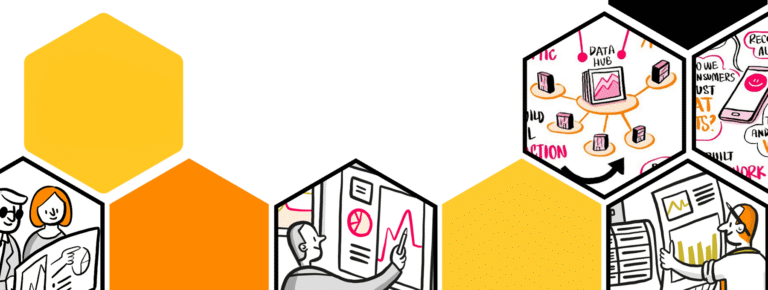Personalization and conversion rate optimization (CRO) are more than buzzwords. Having a personalization and CRO strategy impacts all moving parts of your ecommerce business, from revenue to customer experience and loyalty.
But before jumping headfirst into these topics, let’s remind ourselves that clear processes, sensible methodology, and best conversion rate optimization practices are key. In addition to qualitative customer data, the right hypothesis must be tested to help a business mature in delivering the best customer experience. Below are some top steps we recommend you follow to create data-driven personalization alongside your customer data strategy.
- 1. Knowing your customers
- 2. Automated and trigger-based communication
- 3. Focusing on delivering the right experience
- 4. Finding the right balance between the human and the machine factors
- 5. Accomplish true 1-to-1 personalization
1. Knowing your customers
The foundation of your CRO and personalization strategy is to know your customers and their specific needs. That understanding is built from a combination of historical data, such as past transactions or visits to your site, and real-time insights. This helps you paint an accurate picture of your customers at a given time, allowing you to identify opportunities to interact with them in a relevant and timely way. These interactions are also sought by customers: a large share of shoppers wish for personalized product recommendations and a personalized service.
Crafting a very complex personalization strategy is tempting, but remind yourself that baby steps will ultimately take you further. Do not over-complicate your strategy from day one. Start with simple insights into whether your customer has an account, for example. Based on that data point alone, you can already personalize your customers’ experience by redirecting them to your site’s login or registration pages. And as simple as that, you offer them relevance and convenience. This goes back to the basic concept of telling your customers you remember and value them through a very simple, enhanced user experience.
Once your company masters those simpler use cases, you can start your journey toward more complex personalization, for instance, with hyper-targeted communication and more advanced customer data.
2. Automated and trigger-based communication
Offering personalized interactions to customers is crucial to making them feel valued. More importantly, those touchpoints must be timely to sound relevant to them. This will make an important difference in the quality of your CRO and personalization program.
Delivering the right messaging at the right time will optimize your conversion rate and make your customers feel valued and heard. This is where real-time data usage becomes most important: it helps your triggered messages be contextually relevant. It’s important to keep in mind that the right timing depends on many factors. Indeed, sometimes it’s important to capture user behavior as it is happening and display a pop-up or notification right there, right then. Other times, it could be optimal to wait a couple of hours or days to interact.
So, how does this come to life? Think how you can automate mobile notifications or emails based on a quick change in your users’ behaviour. Based on your understanding of your customers and what you believe they need at that very moment, you can easily automate the delivery of relevant information that will help them complete their journey. As always, however, don’t just assume; let data tell you what works best.
For instance, let’s say that one of your customers only completed half of an insurance policy form before leaving your site. After a few days, you can email them a clear path to pick up the form where they left it. This would be a helpful reminder for the customer, while moving them down the funnel.
A marketer’s job is also to draw a clear line in the sand by understanding “when it’s too much.” You may not want your message to be too loud, invasive, and pushy. This is where we talk about testing and conversion rate optimization, which will help you identify what amount or style of messaging is too little to have any impact versus so much that it annoys visitors.
3. Focusing on delivering the right experience
Being reactive in your CRO and personalization strategy is only half the job. You also need to be able to be proactive and predict your customers’ future needs based on the data available to you.
To act on this, your organization will need to leverage data science. Many data processing tools, like a customer data platform (CDP), can provide you with modeling capabilities to deliver the right message, at the right time, to the right person. The power of intelligent analytics comes in its flexibility to create a propensity or scoring model. This will continuously evolve based on real-time data, ensuring you are delivering relevant personalization to your audience.
Let’s take the example of a customer who likes to cook for her family and her friends. She buys the ingredients online twice weekly, Tuesday for her family and Friday for her friends. A well-fed algorithm will help define the next best action for that moment, differentiating the needs between Tuesday and Friday’s dinners. That way, only relevant messaging can be delivered to our customers. You could even go further by creating personalized offers for this customer to incentivize her to buy additional products or creating upselling opportunities within the same food categories.
4. Finding the right balance between the human and the machine factors
Machine learning has conquered our day-to-day for a while, helping us know our customers better and automate some engagement. But that does not mean that the human in us no longer has a say. On the contrary, the human touch is more than vital, especially for conversion rate optimization and personalization.
Our human touch helps us to avoid being creepy in our personalization strategy. You can show that you understand your customers, but this should be done without making them feel watched or uncomfortable about the data you collect about them. As we said earlier, you need to find the right line in the sand between what is right and what is too much. Testing is vital to achieving the right personalization level as it will help organizations find the right balance with supporting data to continuously evolve their personalization strategies.
In the end, true 1-to-1 personalization comes from balancing automation, predictive analytics, and the human touch – all of this while remaining data-driven. Always remember that for all your personalization efforts, it must be a fair test, not an assumption.
5. Accomplish true 1-to-1 personalization
As you follow these steps, you get closer and closer to the so-wanted 1-to-1 personalization. You are leveraging best practices for conversion rate optimization, using historical and real-time data and data sciences to predict the following best action regarding your customers’ experience.
This may already sound advanced, but anyone can easily reach that level of sophistication by starting with the basics. Your methodology and technology should give you the luxury of testing one use case at a time—to validate your hypothesis one by one and grow your personalization strategy to deliver customer experiences that benefit both your company and your customers.
The right technology should allow you to generate actionable insights based on a single view of your customer, enabling your team to deliver data-led personalization without relying on several independent platforms, departments, and/or processes. A CDP can help you with that, by providing a unified hub to view, manage and store customer data and profiles.
If you are seeking guidance in starting a conversion rate optimization and personalization program to drive more value from your customer data, do not hesitate to get in touch with us today!







